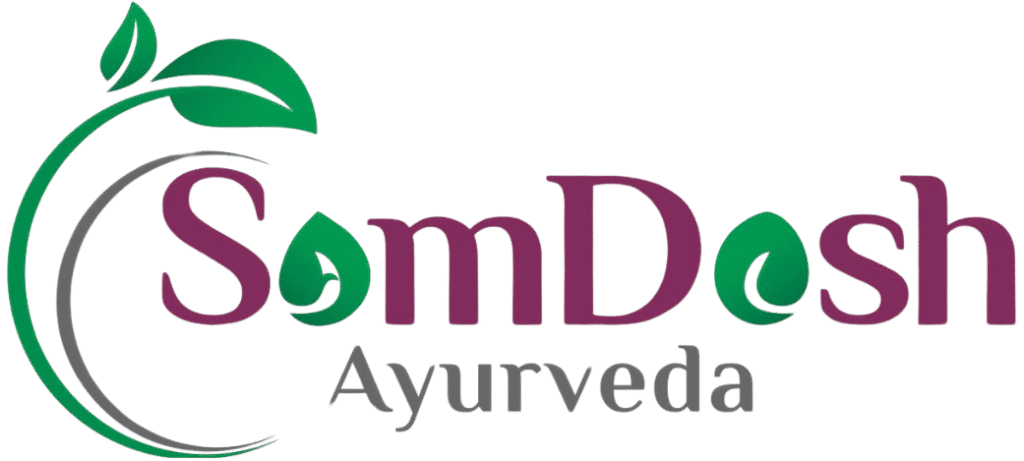Summary
Hormones operate as a network. In men, the HPG axis (brain → testes) coordinates testosterone and sperm production; in women, the HPO axis (brain → ovaries) coordinates cyclical estrogen and progesterone patterns for ovulation and menstruation. Both interact with the thyroid (metabolism), prolactin (signaling balance), cortisol (stress), and insulin (energy and body composition). Sleep, stress, nutrition, training, weight, heat, and environmental chemicals push these levers daily. Typical concerns include energy and mood changes, central weight gain or difficulty losing/gaining, libido/arousal fluctuations, cycle irregularity, erectile or lubrication issues, and fertility challenges. This guide explains what to look for, how testing is timed for men and women, and how to build a realistic 12-week restoration plan blending modern standards with Ayurvedic principles.
Quick Navigation
What Are Hormonal Imbalances?
Imbalance means the signals and responses between brain, glands and target tissues are off-rhythm. For men, this affects testosterone trends, morning erections, body composition and sperm parameters. For women, it affects ovulation quality, cycle length/flow, PMS/PMDD, skin/hair, metabolic resilience, and perimenopausal transition. Thyroid pace, prolactin tone, stress hormones and insulin sensitivity influence both sexes.
Hormone Cheat Sheet
Testosterone (Men)
Drive, mood, muscle, recovery, erections, sperm. Low trends → less energy, fewer morning erections, central fat gain.
Estrogen (Women)
Cycle rhythm, mood, bones, skin/vascular health; low → hot flashes, vaginal dryness; high/variable → PMS/PMDD, cycle symptoms.
Progesterone (Women)
Luteal-phase calm & sleep; low luteal levels may relate to PMS, short cycles or luteal symptoms.
Thyroid (TSH + FT4)
Metabolic tempo. Slower → fatigue, weight gain, cold intolerance; faster → heat intolerance, anxiety.
Prolactin
High levels can dampen reproductive signaling in men and women—context and repeat testing matter.
LH & FSH
Brain messengers—help localize testicular/ovarian vs central patterns and confirm ovulation timing.
Insulin & Glucose
Insulin resistance drives central fat gain and blunts hormonal signaling; steady meals + movement are key.
Cortisol
Chronic stress/sleep loss keep cortisol high at wrong times—undermining recovery, libido and cycles.
AMH / Ovarian Reserve (Women)
Long-term egg reserve context; not a monthly fertility score but useful in planning.
Symptoms: Men vs Women
Men
- Low energy, low motivation, irritability.
- Fewer morning erections, reduced libido, erectile fluctuations.
- Central fat gain, reduced muscle, slower workout recovery.
- Fertility: changes in semen parameters or timing difficulty.
Women
- Cycle changes (length/flow), PMS/PMDD, breast tenderness.
- Perimenopause: hot flashes, sleep disruption, mood swings; menopause: dryness, low libido.
- PCOS-like patterns: irregular cycles, acne/hair changes, insulin resistance.
- Fertility: ovulation timing issues; luteal-phase symptoms.
Causes & Risk Factors
Common Drivers (Both)
- Chronic stress, late nights, irregular sleep–wake cycles.
- Ultra-processed diet, alcohol excess, tobacco; dehydration.
- Sedentary patterns or overtraining without recovery.
- Heat exposure (saunas/hot tubs, heated seats, tight non-breathable layers).
- Endocrine disruptors from plastics/solvents; poor air quality.
Sex-Specific Contexts
- Men: central obesity, sleep apnea, high stress, pelvic heat.
- Women: cycle irregularity, PCOS phenotypes, postpartum changes, perimenopause/menopause transition.
Diagnosis & Core Checks
Good evaluation integrates history, exam and targeted labs—timed correctly—rather than chasing a single number.
Men: Typical Labs (Case-by-Case)
- Morning total testosterone with SHBG (calculate free T when useful).
- LH, FSH to localize primary vs central patterns.
- Prolactin (repeat if borderline; consider context).
- TSH ± FT4; glucose/A1c; lipids; sleep apnea screening when indicated.
- Semen analysis when fertility is a goal (trend over ~12 weeks).
Timing: Draw morning labs after a normal week of sleep; avoid heavy training/illness immediately before testing when possible.
Women: Typical Labs & Timing
- Cycle days 2–5: LH, FSH, estradiol, TSH ± FT4; ± androgens if indicated.
- Luteal progesterone: ~7 days after ovulation (or 7 days before expected menses).
- AMH for ovarian reserve context; glucose/insulin metrics when metabolic risk suspected.
- Ultrasound when cycle irregularity or structural concerns exist.
Cycle awareness: Align sleep, training and nutrition with phases to reduce PMS/PMDD burden and support performance.
Sexual & Fertility Interplay
Sexual Function
- Low libido and arousal changes often reflect combined sleep–stress–metabolic drivers in both sexes.
- Men: erectile fluctuations track with late nights, alcohol, heavy dinners, high-stress days.
- Women: arousal and lubrication vary by cycle phase; perimenopause may bring dryness and sleep disruption.
- Plan intimacy in higher-energy windows; longer warm-up, generous lubrication, and communication lower pressure.
Fertility
- Men: semen quality reflects the prior ~3 months—optimize sleep, heat avoidance, movement and nutrition.
- Women: align tracking (basal temp, ovulation kits) and lab timing; address sleep and nutrition to support ovulation quality.
- Coordinate couple timelines; review trends every 8–12 weeks.
12-Week Restoration Plan
Daily Foundations (Both)
- Sleep: 7–8 hours; fixed wake time; screens off 60 min before bed; cool, dark room.
- Sunlight & steps: early-day outdoor light; 7–10k steps/day; 10–15 min walks after meals.
- Meals: consistent timing; balanced plates (vegetables, quality proteins, whole grains/legumes, healthy fats); earlier, lighter dinners.
- Hydration: steady water intake; moderate caffeine earlier in the day.
- Substances: stop tobacco; moderate alcohol; prefer alcohol-free evenings on intimacy or test days.
Stress & Breath
- 10–15 minutes/day of breathwork or mindfulness; lengthen exhales.
- Daily 5-minute “shutdown ritual” to end work mentally.
- Guard one no-phone meal or walk each day.
Weekly Rhythm & Follow-Up
- Strength: 2–3 sessions (push/pull/legs), progressive but not exhaustive.
- Cardio: 2–3 sessions of Zone-2 (25–40 min); optional intervals once recovered.
- Recovery: at least 1 full rest day; mobility; earlier bedtime by 30–60 min.
- Women: dial intensity up mid-cycle; favor recovery during late luteal if symptoms rise.
- Review progress at weeks 4 and 12; adjust sleep, training windows and meal timing.
Nutrition Patterns
Build the Plate
- Half-plate vegetables most meals for fiber and micronutrients.
- Quality proteins spread across the day to support recovery and lean mass.
- Whole grains/legumes for steady energy; time higher-carb meals near training.
- Healthy fats (nuts, seeds, oils) in moderation; avoid repeatedly heated oils.
Strategic Choices
- Prefer earlier dinner; leave 2–3 hours before sleep.
- Limit ultra-processed snacks and sugar-sweetened beverages.
- Women: plan protein-rich snacks in late luteal; monitor iron status when cycles are heavy.
- Men: avoid large late dinners and heavy alcohol on test/intimacy days.
Training & Recovery
Strength Priorities
- Compound lifts scaled to skill (squats/hinges, pushes/pulls), 6–12 reps, 2–4 sets.
- Progress gradually; stop 1–3 reps before failure; log sessions.
- Protein + carbs within a few hours post-training; sleep is the best anabolic tool.
Avoid Overcooking the System
- Balance high-intensity work with Zone-2 base and rest.
- Deload week every 4–6 weeks if persistently drained.
- Chronic soreness, falling performance and poor sleep signal the need to pull back.
Women’s Cycle & Life Stages
Cycle-Sync Tips
- Follicular → Ovulation: energy typically higher—schedule tougher sessions and complex tasks.
- Luteal: prioritize sleep, recovery, protein-rich snacks; lighter training during symptom spikes.
- Time labs to cycle day; track ovulation for fertility or luteal assessment.
Peri/Menopause & Postpartum
- Hot flashes and sleep fragmentation respond to cooling routines and sleep hygiene.
- Strength training + protein support bone and body composition through transition.
- Postpartum: expect dynamic prolactin/estrogen shifts; protect sleep and nutrition, pace training.
Sleep, Stress & Breathwork
Evening Wind-Down (20–45 min)
- Dim lights; avoid email and heated conversations.
- Warm shower, light stretch, journaling, or calm reading.
- Bedroom: cool, dark, quiet; remove notifications.
Breathing Drills
- 2-minute nasal breathing: inhale softly, exhale slightly longer.
- Box breathing (4-4-4-4) for daytime stress spikes.
- Pelvic “down-training” on the exhale to reduce unconscious clenching that blunts arousal.
Heat & Environmental Exposures
- Keep laptops off the lap; limit prolonged heated seats and hot tubs—especially during fertility windows.
- Choose breathable underwear; avoid tight, non-ventilated layers for long periods.
- Prefer glass/steel for hot foods; avoid microwaving in plastic; ventilate when using solvents/paints.
- Air quality: cross-ventilate rooms; consider indoor plants/filters where appropriate.
Tracking & Lab Timeline
Weekly Log (0–10 scales)
- Energy, mood, sleep hours/quality, stress, libido/arousal.
- Training sessions and recovery quality; waist measurement monthly.
- Women: cycle day, symptoms, ovulation signs; Men: morning erections.
Suggested Timing
- Baseline labs → implement plan → reassess at ~12 weeks under similar conditions.
- Women: align lab timing to cycle phase (days 2–5; luteal progesterone post-ovulation).
- Men: morning labs after normal sleep; semen recheck ~12 weeks when fertility is a goal.
Myths vs Facts
Myth
- “One lab number defines my health.”
- “Sleep doesn’t impact hormones much.”
- “Training more always fixes hormones.”
- “Cycle timing doesn’t matter for tests.”
Fact
- Context and trends matter more than a single value taken on a bad week.
- Sleep is a master lever for testosterone, ovulation quality, insulin sensitivity and mood.
- More isn’t better—smart programming with recovery is.
- Cycle-aligned testing improves interpretation and planning for women.
Need Personalised Guidance?
Your sleep, stress, training and life stage are unique. For a discreet, individualized plan aligned with your goals, book a consult:
Doctors for Hormonal Imbalances
Dr. Ranjeet Singh
BAMS, DMR — Male Infertility & Sexual Health
Focus: HPG axis evaluation, sleep–stress–training integration, semen trend interpretation, couple-centric guidance.
Dr. Megha Yadav
BAMS — Female Infertility & PCOS/PCOD
Focus: HPO axis, cycle-timed diagnostics, PCOS patterns, perimenopause planning, and partner coordination.
Disclaimer
This page is educational and not a substitute for in-person medical advice, diagnosis, or treatment. Plans are individualized after evaluation.
Written By : Dr. Ranjeet Singh & Dr. Megha Yadav



